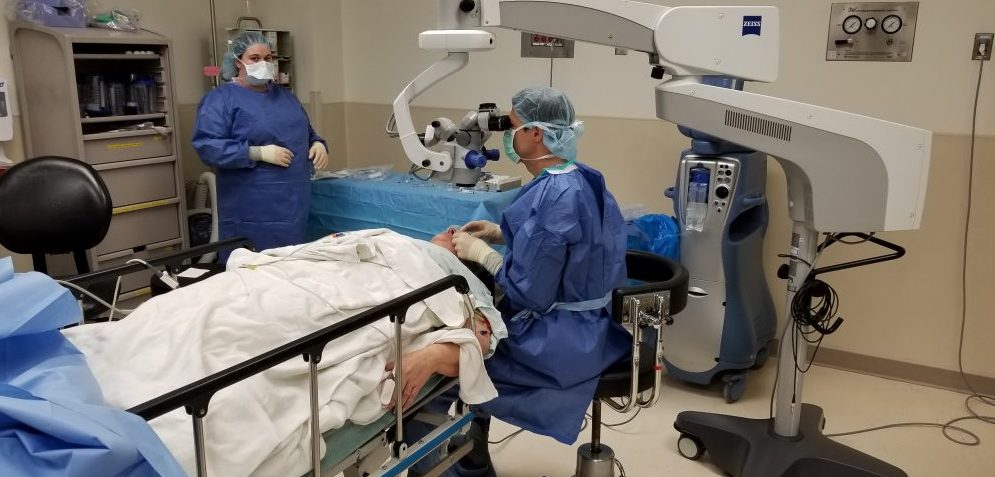Dr. Devin King offers cutting-edge vision solutions for his patients in West Virginia. We are leaders in cataract and refractive techniques providing sophisticated laser and lens implant surgery. From comprehensive eye care to cosmetic and functional surgical procedures, The Eye Associates personal care coordinators will guide you through every step of your treatment.

Refractive Surgery
Refractive surgery is a specialty field in ophthalmology that utilizes advanced surgical procedures to correct common vision problems including:
- Nearsightedness
- Farsightedness
- Astigmatism
- Presbyopia or aging eyes
The goal of refractive surgery is to help patients reduce or, in some cases, eliminate their need for prescription eyeglasses and/or contact lenses. Refractive surgery might be a good option for you if:
- You want to decrease your dependence on glasses or contact lenses
- Your eyes are otherwise healthy/free of eye disease
- You acknowledge that all surgery comes with some – even a slight chance – of risk and you can accept the inherent risks and potential side effects of the procedure
- You understand that you could still need glasses or contacts after the procedure to achieve your best vision
- You have an treatable refractive error as determined by a qualified refractive surgeon
Cataract Surgery
A cataract may not need to be treated if your vision is only slightly blurry. Simply changing your eyeglass prescription may help improve your vision for a while. There are no medications, exercises, or glasses that will cause cataracts to disappear or prevent them from forming. Surgery is the only way to remove a cataract. When you are no longer able to see well enough to do the things you like to do, cataract surgery should be considered.
Surgery is usually done on an out-patient basis, either in the hospital or an ambulatory surgery center. When you arrive for surgery, you will be given eye drops to dilate the pupil. You may also be given a mild sedative to relax you. A local anesthetic will numb the eye. The skin around the eye will be thoroughly cleansed and sterile coverings will placed. You may see light and movement, but you will not see the surgery while it is happening.
Under a microscope, a small incision is made in the eye, tiny surgical instruments are used to break apart and remove the cloudy lens from your eye. A plastic lens is implanted in the eye to replace the natural lens that was removed. After a short stay in the outpatient recovery area, you will be ready to go home.
Diabetic Laser Surgery
Focal Laser Surgery – Focal laser treatment stabilizes vision. It is used to treat macular edema. Your doctor places up to several hundred small laser burns in the areas of retinal leakage surrounding the macula. These burns slow the leakage of fluid and reduce the amount of fluid in the retina. The surgery is usually completed in one session. Further treatment may be needed.
PRP (Pan-Retinal) Photocoagulation – PRP laser treatment is used to slow the growth of new abnormal blood vessels that have developed over a wider area of the retina. The ophthalmologist may make hundreds of laser burns on the retina to stop the blood vessels from growing. The person may need two or more treatment sessions.
Glaucoma Laser Surgery
Selective Laser Trabeculoplasty (SLT) – SLT uses a laser that works at very low levels. It treats specific cells “selectively,” leaving untreated portions of the trabecular meshwork intact. For this reason, SLT may be safely repeated. SLT may be an alternative for those who have been treated unsuccessfully with ALT or pressure-lowering drops.
